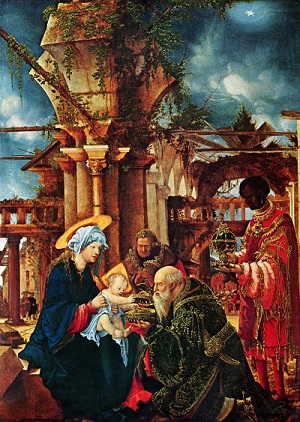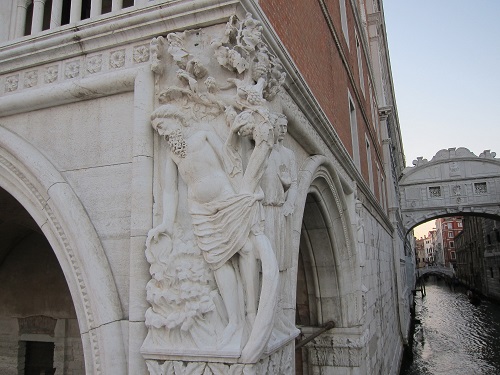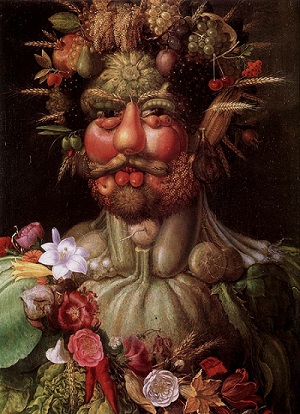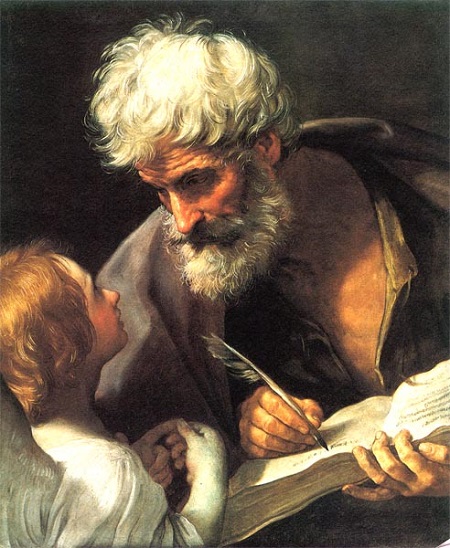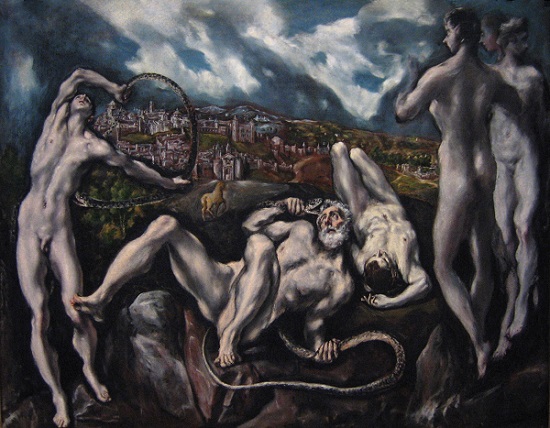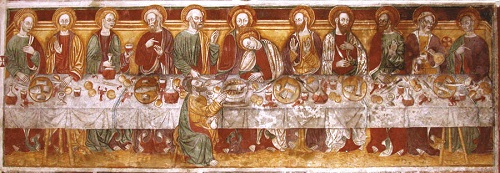
I have decided to do a series of short blogs on the relationship between Renaissance Art and wine and food and this is the first in that series. This one looks at three paintings of the Last Supper and the differences in which wine in particular is depicted.
The Last Supper
This fresco (above) painted by Zanino di Pietro is in the Church of San Giorgio, San Polo di Piave and is dated as having been painted in 1466. It is regarded as portraying food and drink with considerable accuracy. The table shows platters of fish, some having already been cut into sections, a number of crayfish (gamberi) whole or dismembered across the table along with 6 carafes of wine and a glass for each diner at the table. Interestingly, di Pietro shows both red and white wine on the table, with 5 carafes or red and 1 of white. The local influence is seen here as the village of San Polo di Piave lies northeast of Venice in a water prominent region known for its freshwater crayfish and its wine – both the local red Raboso and whites like Tocai and Verduzzo.
What is the signifiance of this inclusion of both red and white on the table?
If you look at the painting of the Last Supper by Duccio di Buoninsegna (c.1308-11) (below), a painting which it is said influenced di Pietro, there is only red wine on the table and only one decorated ceramic boccale pictured. It must be remembered that at this time, the Bible was the main textual source which both addressed spiritual matters, but also fed the inspiration of artists. Importantly, when it came to the depiction of wine, red wine was seen as the wine of the Eucharist and so red wine was preferred, however communion wine was not always red. There was also concern that one might accidentally confuse white wine with water, and as red wine was mixed with water, the need to avoid the confusion was obvious. Perhaps the inclusion of the wine white in di Pietro’s painting is more about a moving towards the preference of white wine because it left fewer traces in the linen. di Buoninsegna’s painting is also considerably more sparse in food, with only a suckling pig (interesting in itself given the biblical connection) and some bread.
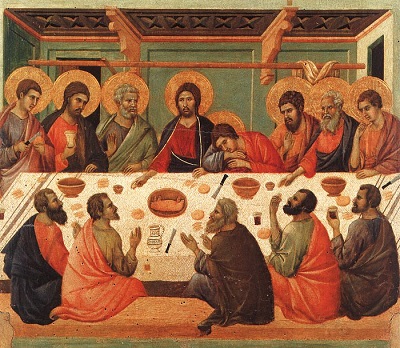
The final painting I want to include here is that done by Paolo Veronese in 1573 for the Dominican refectory of San Giovanni e Paolo in Venice (below). Here you can see some four dozen very elaborately attired guests enjoying a meal. The stemmed goblets are all products of the Murano glassworks and there are wine containers of every type included on the table – silver and glass pitchers, leather flasks, and even a chianti raffia type bottle included – thus showing that wine had become very much part of Venetian nobility life and that this was a society little affected by the economic and political uncertainties that was plaguing the rest of Europe at that time. Interestingly, the painting was subsequently renamed The Feast in the House of Levi after the Dominican patrons of Veronese, totally dismayed by Veronese’s inclusion of extraneous elements (such as Sansovino’s new built library in the background of the picture) and it’s failure to portray religious orthodoxy (important at the time) referred the matter to the Holy Office of the Inquisition. Veronese was asked by the Inquisition (which vigorously pursued him) who he supposed was present at The Last Supper and is said to have admitted that “if in a …painting there is space left over, I fill it with figures from my imagination”. He was ordered to make corrections but rather than so doing, he merely renamed it.
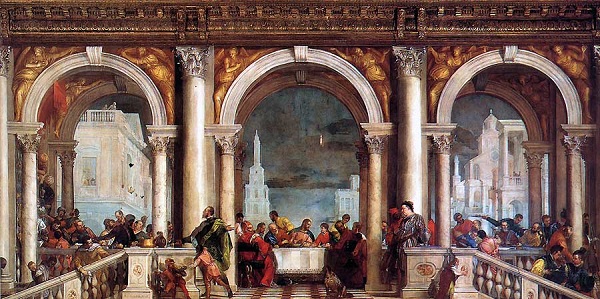
There is clearly much more that can be said about these paintings but this small snippet of examination shows how in three very different portrayals of the Last Supper, the portrayal of wine is significant both in colour, vessels and amount – all for differing purposes.



